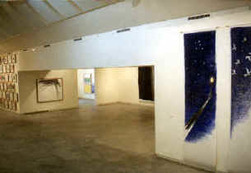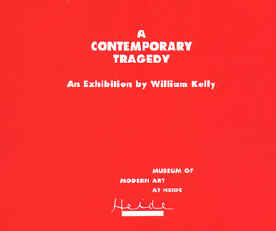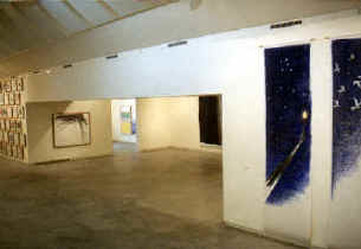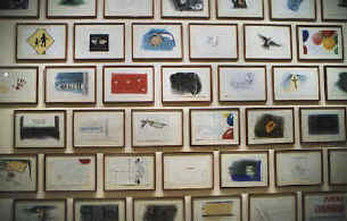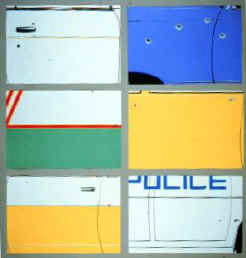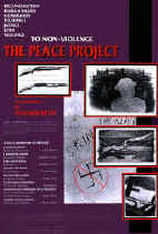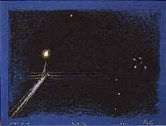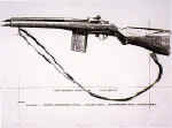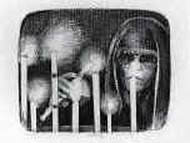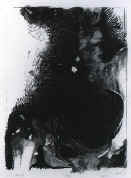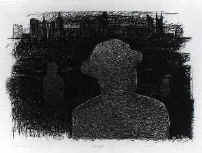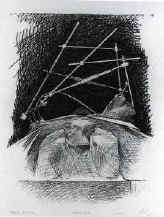THE PEACE PROJECT
|
"It is a major contribution to the discussion of violence in urban society."
Urban Design Forum Newsletter, June 1994 |
"'The Peace Project' is quietly becoming one of the most influential visual arts projects of the decade."
Lehigh University, USA, exhibition announcement, 1995 |
Background Information:
These artworks are an artist's response to issues raised by a mass murder in Melbourne in 1987. Given unlimited access by police to forensic and other material this project took five years to complete (1988-1993) and was first exhibited in Melbourne and Boston in 1993.
This body of work came to be known as "The Peace Project" and is referred to specifically as the works done over that five year period. As well, it has become popularly used as an umbrella or generic phrase for all Kelly's works since which deal directly with human rights, social justice and reconciliation issues.
He says of the project, "When I started this, I was prepared to face the reality that it might not be exhibited in my lifetime. I was prepared after five years to quietly pack it all safely away in the event someone found it at some future date."
These artworks are an artist's response to issues raised by a mass murder in Melbourne in 1987. Given unlimited access by police to forensic and other material this project took five years to complete (1988-1993) and was first exhibited in Melbourne and Boston in 1993.
This body of work came to be known as "The Peace Project" and is referred to specifically as the works done over that five year period. As well, it has become popularly used as an umbrella or generic phrase for all Kelly's works since which deal directly with human rights, social justice and reconciliation issues.
He says of the project, "When I started this, I was prepared to face the reality that it might not be exhibited in my lifetime. I was prepared after five years to quietly pack it all safely away in the event someone found it at some future date."
Since this statement, the full body of 80 works has had a major museum exhibition and the Prints from the Peace Project have been exhibited in Australia, America and Europe. A video, articles, catalogues and a book have helped lead to the international response to the work.
Critically well received, it was nominated for a Human Rights Award and is the first visual arts project to receive an "Australian Violence Prevention Award" from the Prime Minister. In a brochure for the Award-related exhibition Judith Dixon writes "...it points out the contribution one individual can make to help create a safer world as we are also witnessing with the attention paid to issues of tolerance raised by Stephen Spielberg's 'Schindler's List' and Thomas Kenneally's 'Schindler's Ark'. The overwhelming response to Kelly's work] points out that the community wishes to engage in this dialogue."
A CONTEMPORARY TRAGEDY
The title of the exhibition dealing with the circumstances that surround the disaster of a mass murder.
Museum of Modern Art (Melbourne) June - July 1993
Museum of Modern Art (Melbourne) June - July 1993
|
"A Contemporary Tragedy" is the title of this exhibition of art by William Kelly on issues surrounding a mass murder. The catalogue with reproductions of 17 works in b & w and colour has an introduction by Prof. Duncan Chappell and essays by art historian, Jenny Zimmer and curator, Anna Clabburn.
"It highlights the wide range of issues that arise out of these questions in a graphic and extraordinary way." from the Introduction by Prof. Duncan Chappell, Director, The Australian Institute of Criminology |
"William Kelly's process of weaving art through life and community suggests his homage to the modus vivendi of past ethical engineers such as Leo Tolstoy, Herman Hesse, and Mohandas Gandhi. These men, like Kelly, were also curious about the physiognomy of their time and motivated to articulate a better way of being human."
from catalogue essay by Anna Clabburn (Curator)
"Kelly's project operates within the parallel traditions of moral theory and associated artistic endeavour."
from catalogue guest essay by Jenny Zimmer
from catalogue essay by Anna Clabburn (Curator)
"Kelly's project operates within the parallel traditions of moral theory and associated artistic endeavour."
from catalogue guest essay by Jenny Zimmer
PROLOGUE
A "prologue", published as a limited edition text-work, was written for this project by William Kelly to help clarify his own views of the issues raised and his part in them. The following is an edited version of the text from the limited edition print "PROLOGUE".
"I don't like violence. It dehumanises the aggessor and causes untold suffering to the victim. In its wake the family, friends and the society are left to deal with their own pain and fear and sadness. Yet we often cheer violence, support it and make heroes of those who foster it and commit it. The contradictions in our position on this issue are astounding.
Some years ago I came upon a press photograph of a grieving mother and father who had lost their daughter in a terrible tragedy. There have been many such photos that we have grown accustomed to seeing...That particular photograph did not come from a major international centre of crime or from a war zone. Rather it was from a massacre of innocent people in Australia, in Melbourne--a peaceful city under the Southern Cross.
What do we do with the law abiding bigotry; the law abiding intolerance; the law abiding promotion of gratuitous violence in the media; the law abiding institutionalisation of poverty and homelessness; the law abiding environmental destruction; the Christian affront of a just war? I am afraid for my children that the violence, anti-semitism, racism and sexism put forward under the guise of patriotism, honour, religion and power might grow rather than diminish.
Events of human violence raise questions of who we are in relation to one another...Social systems require trust and faith in others. To not trust is to not love. To not love is unthinkable. To not be loved is intolerable.
Events like these remind us how vulnerable and fragile we are, when one person propped up by all the systems and individuals who exploit weakness and bias can wound so many of us so thoroughly.
...We must understand that the politics of violence is a weakness and the economics of violence is always a loss. If we wish our children well then we must also wish them peace..."
“Notations” (details). One work comprising 39 drawings (each 38 x 56 cm) Charcoal and pastel on paper. Collection: La Trobe University Museum of Art, Melbourne, Australia
"Kelly joins a number of other artists who've portrayed the victims of violence through imagery - Goya (Disasters of War), Picasso (Guernica), Kollwitz (The Uprising scenes) and Golub (Mercenaries series). These artists show us that art can play an integral role in civilizing and humanizing our universal society."
Robert Godfrey, "The Xpress", Asheville, North Carolina, USA
"This project aligns him somewhat with philosophers like Iris Murdoch and Alisdair MacIntyre; echoing the former's attention to moral details and the latter's linking of narrative histories within the tradition of moral theory..."
Jenny Zimmer (from the Catalogue)
"Kelly joins a number of other artists who've portrayed the victims of violence through imagery - Goya (Disasters of War), Picasso (Guernica), Kollwitz (The Uprising scenes) and Golub (Mercenaries series). These artists show us that art can play an integral role in civilizing and humanizing our universal society."
Robert Godfrey, "The Xpress", Asheville, North Carolina, USA
"This project aligns him somewhat with philosophers like Iris Murdoch and Alisdair MacIntyre; echoing the former's attention to moral details and the latter's linking of narrative histories within the tradition of moral theory..."
Jenny Zimmer (from the Catalogue)
|
"To see the work first hand...is to be moved in a way which strikes at the heart of our personal and community consciousness."
To see the work first hand...is to experience an educative process which brings forward the Artist as a most powerful communicator. To see the work at first hand is to appreciate the authority of its author to be an outrider of our personal conscience." John Sullivan, Opening Speech to commemorate the acquisition of the work "Car Panels" and the exhibition of "Prints from the Peace Project", McClelland Gallery, Australia, 22 May, 1994 |
